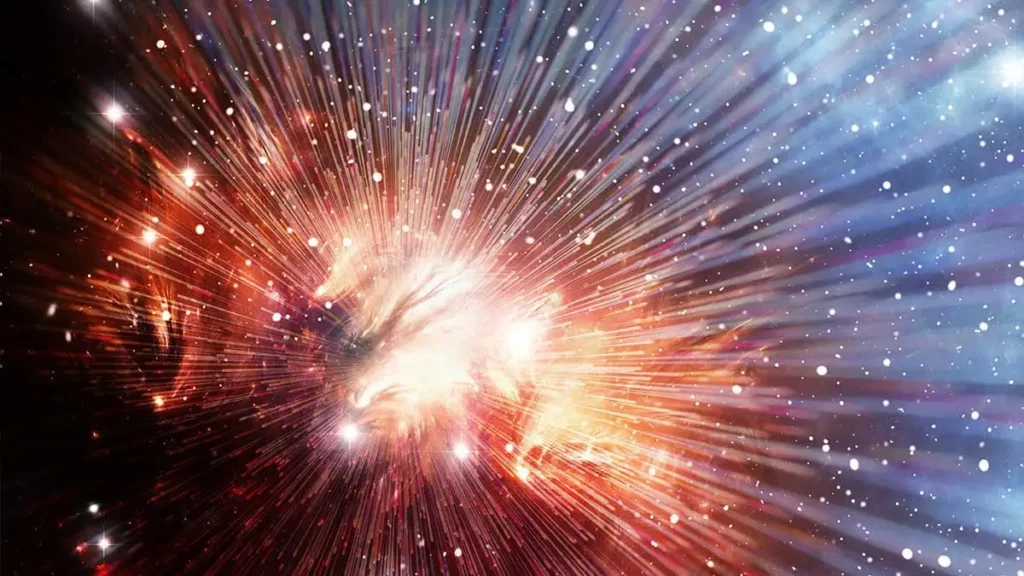Georges Lemaître, an astronomer, had a big idea in 1927. He claimed that the universe began as a single point long ago. He claimed that the universe stretched and expanded to become as large as it is now and could continue to stretch. But do you know what the Big Bang actually is?
The Big Bang was not an explosion that occurred in the center of the universe; in fact, there is no such thing as a center to the universe. It has happened and is happening everywhere at the same time.
The Big Bang Theory
The Big Bang is a very misleading name for our expanding universe. We see a universe that is infinitely expanding into itself. Big Bang connotes a firecracker exploding at a specific time and location – with a center.
There is no center to the universe. The Big Bang happened all at once and was a process in time, not a point in time. We know this because, first, galaxies rush away from each other rather than toward a central point, and Second, the heat left over from early times uniformly fills the universe. (Source: NASA)
Visuals on the Big Bang: Can We See the Big Bang and What Can We See?
No, we cannot observe the Big Bang itself. We can see the heat that existed approximately 380,000 years after the universe began expanding 13.8 billion years ago, which is what we call the Big Bang.
This heat pervades the entire sky and fills the whole universe. We were able to map it using satellites built by NASA and ESA called the Cosmic Background Explorer (COBE), the Wilkinson Microwave Anisotropy Probe (WMAP), and Planck. The universe was smooth at this point, with only minor temperature ripples. (Source: NASA)
It All Started with a Big Bang
Edwin Hubble, an astronomer, noticed that other galaxies were moving away from us. That is not all. The galaxies farthest away were moving faster than those closer to us.
This meant that the universe was still expanding, as Lemaître predicted. If things were separating, it told that not long ago, everything was close together.
When the universe began, it was nothing more than hot, tiny particles mixed with light and energy. Nothing resembled what we see now. It cooled down as everything expanded and took up more space.
The tiny particles congregated. They created atoms. The atoms are then grouped. Atoms came together over time to form stars and galaxies.
The first stars produced larger atoms and atomic groups. As a result, more stars were born. At the same time, galaxies were colliding and merging. As new stars were born and died, asteroids, comets, planets, and black holes were formed. (Source: NASA)
The First Stars and Galaxies Forming
Life’s chemical elements were created in the first generation of stars after the Big Bang. We are here today because of them, and we want to know how that happened! We have theories and predictions, but we don’t know.
The first stars must have influenced our history in some way, beginning with stirring everything up and producing other chemical elements besides hydrogen and helium. So, if we genuinely want to understand where our atoms came from and how the tiny planet Earth became capable of supporting life, we must first measure what happened in the beginning. (Source: NASA)
Image from Newscientist
